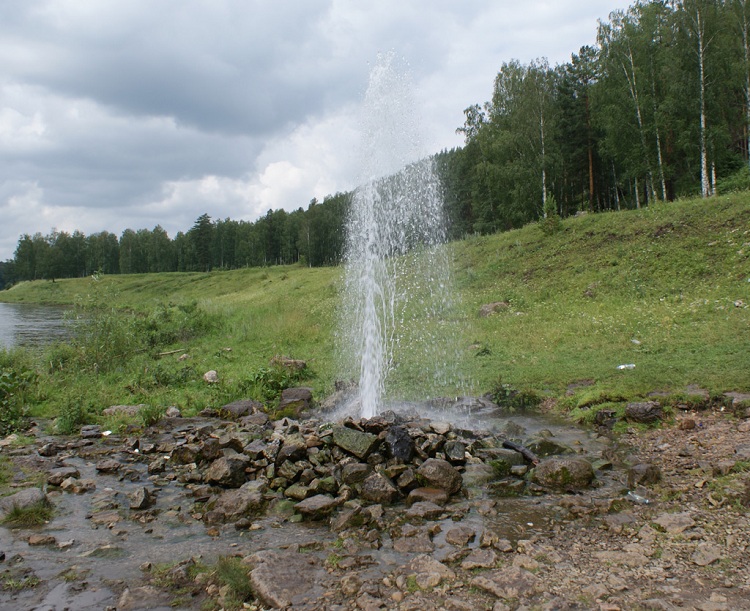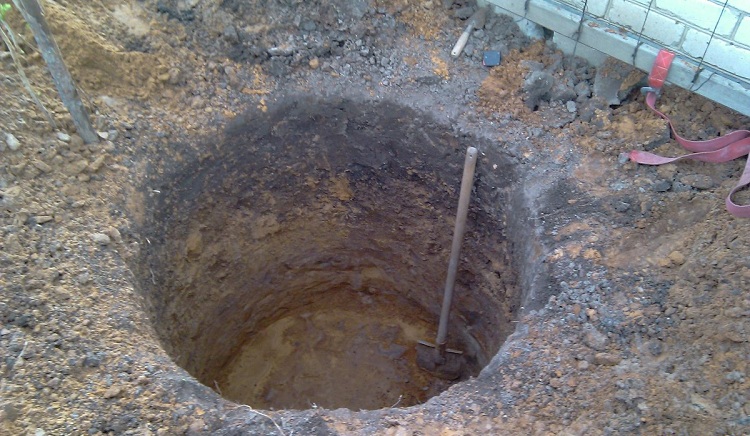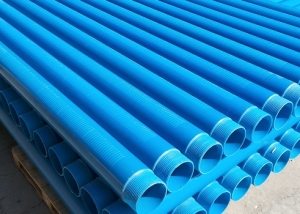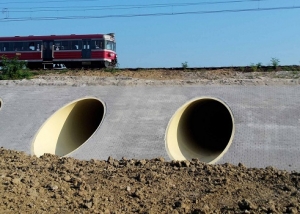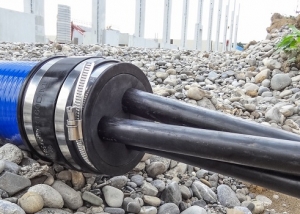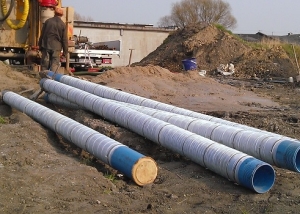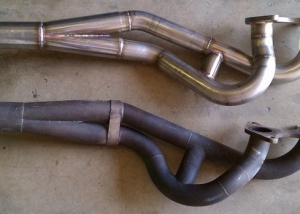The most difficult life of the summer resident is the lack of a large amount of water. Its deficiency is especially felt in the warm season. Water is necessary for the shower, for watering the garden, and in order to just wash or cook dinner. The usual well can save the situation, but it’s much better - a deep well. Hiring a team for this is an expensive pleasure. Therefore, many summer residents provide themselves with life-giving moisture, equipping the well with water on their own.
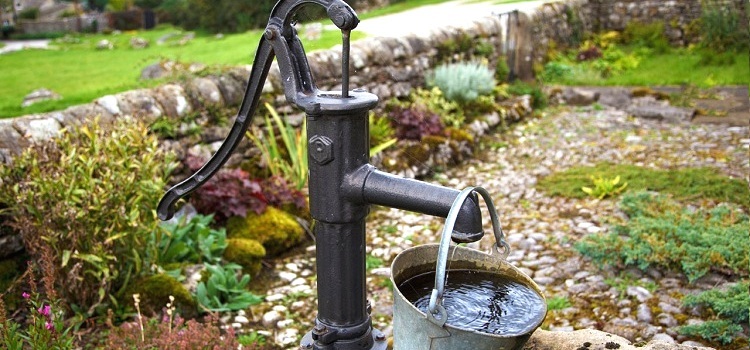
Installation of a well for drinking water - a necessary measure in private estates that do not have centralized water supply
Content
What speaks in favor of wells
Three main features are inherent in similar constructions. Each individually and collectively determine the growing popularity of wells among owners of suburban private houses.
No regular cleaning required. Each well owner has to clean and disinfect the structure at least once a year, change the bottom filter, carry out preventive repairs, etc. The well needs to pay much less attention, and therefore the cost of professional assistance is not so noticeably felt by its owner.
Long service life. At first glance, it may seem that there is more water in the well than in the well. However, this does not serve as an indicator of filling, since the well delves, as a rule, on clay. But after passing a certain period of time, this layer is depleted and ceases to produce enough water. Water well drilling is carried out on practically inexhaustible sandy soils. Thus, after a certain time interval, the well will need to be dug, but the well will continuously supply water throughout the entire operation period.
Water purity. It has long been the purest, and according to doctors, even spring water is considered to be good for health. And if the inhabitants of large cities, it remains only in dreams, then the owners of cottages can get drinking water, having carried out work on equipping the well with their own hands on their own personal plot. The purity of the water obtained from this source, and not just its quality, is significantly higher compared to the well. Mud, organic debris, rain and other pollutants do not penetrate the narrow neck.
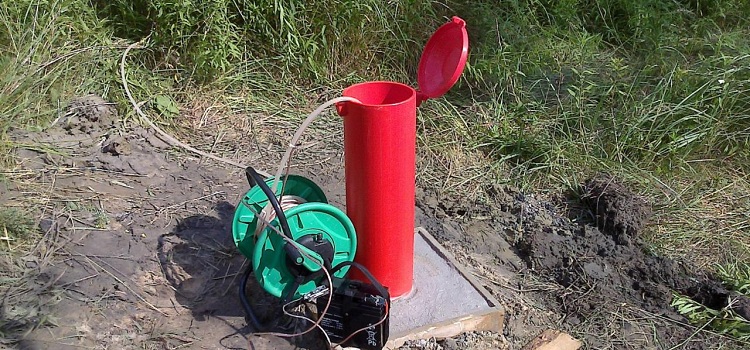
Unlike the well, the neck of the well is very narrow and the ingress of foreign objects and debris into it is practically excluded
Good to know! The water present in the well does not mix with meltwater from the soil, and, moreover, it is very effectively purified by natural filtration.
Where to get water and types of borehole structures
There are three sources of water for wells and boreholes:
- high water. The depth of this layer usually does not exceed 4 meters. It is filled due to melt and rain water. It is unsuitable for drinking and is suitable only for watering green spaces in a garden or vegetable garden. It is this reason that makes it necessary to isolate these structures from a given water layer during the creation of a well or a well;
- groundwater. They lie at a depth of 10 ... 40 meters and their aquifer is constant.This factor, in turn, ensures the constancy of the water level in the well. Saturation of the layer occurs by river waters, as well as by melting snow and precipitation;
- artesian waters. They are considered to be the cleanest and most useful. Lying between the strata of the rock, these waters are under the influence of high pressure. Therefore, when drilling and equipping artesian wells are performed, they rise up the hole. And sometimes they even beat a fountain.
Today there are many types of wells. Belonging to one of them is determined by design features, installation depth and characteristics of the produced water. At the same time, only 2 types are suitable for arrangement on a suburban area:
- sandy ("on the sand");
- artesian ("on limestone").
What is present in the aquifer - sand or limestone - can be understood from the name of a particular species. In addition, they differ in depth. The maximum distance of the bottom of the structure "on the sand" from the surface of the earth is 50 meters. But the depth of the well on artesian-type water reaches 200 meters. The conclusion can be drawn as follows: do not overpower independent construction of the limestone structure, so the sandy view is the best option for summer cottages.
First you need to find out the level of groundwater. But before you turn to specialists for services, you can ask how deep the neighbors have wells. If the value of this parameter does not exceed 25 meters, the chances of arranging a well with your own hands are quite large.
Choose the right place for the well
Today, there are several ways to carry out this procedure. Below are just a few of them.
The first is executed in the following sequence:
- about 2 liters of silica gel granules are prepared. They fall asleep in an unglazed pot;
- a pot with a desiccant is buried in the places of the proposed arrangement of the well.
Advice! Dig a pot to a depth of not more than one and a half meters.
- After a day, the pot must be dug up and weighed. Well development should be carried out in a place where the difference in weight is greatest.
The second way is popular and consists in simple observation. In the early morning or evening, waiting for the summer heat to disappear, inspect the surroundings. You will definitely notice a place where there is a sufficient amount of water in the soil, as fog will accumulate above it. And pay attention to such a moment: where the concentration of underground water is especially high, the fog usually rises up a column, and not just swirls.
Almost every aquifer copies the terrain. Therefore, groundwater accumulations can be found with high probability in the hollows between the hills and pits.
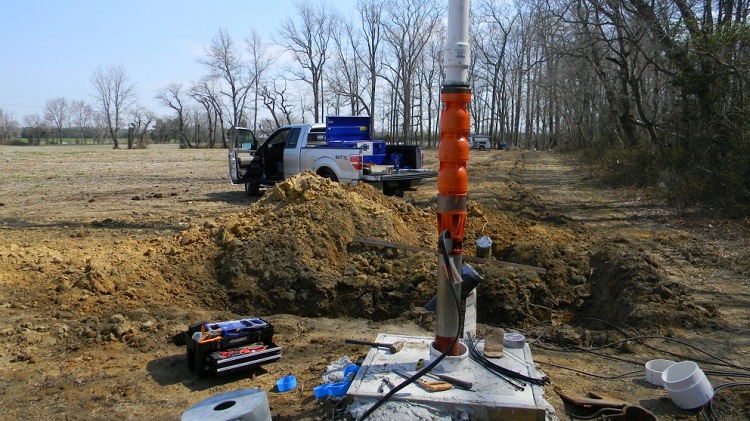
You can choose any place for the well, but on flat terrain you will have to drill deeper than in the depressions
Water is present on flat terrain, but can occur at a very great depth. If there are reservoirs near the place of the proposed well installation for water, a barometric method can be used to determine the depth of the aquifer. For this purpose, a conventional aneroid barometer is used.
First, he takes measurements of air pressure on the shore of a reservoir located closest to the proposed location for digging a well. Then the pressure is measured in the place where the well will be arranged under water. If the recorded values of this parameter differ by 0.5 millimeters of mercury, then the aquifer is located at a completely accessible depth of 6-7 meters.
At the same time, as practice shows, the method of exploratory drilling demonstrates the greatest reliability. It is performed quite simply. The standard garden drill drills the soil to a depth of 10 meters. The appearance of water in the hole will inform about the achievement of the aquifer. And it will become noticeable almost immediately.
Machinery for drilling
It is clear that the arrangement of an artesian well for water is performed only using special drilling equipment. And for the sand there is a simple manual mechanism. It consists of a tower, to which a column is suspended. You can make the mechanism yourself, because its design is quite simple. We consider in more detail the individual parts of this equipment.
As the base is a tower that looks like a tripod. The supports are made of metal pipes or logs connected at the top by a kingpin. There is also a block with which the column rises. The two legs of the tower are connected by a winch (collar). The main functional element is a drilling column. It consists of several rods 3 meters long connected by couplings.
Good to know! Sometimes a meter and a half may be enough.
The column is immersed in the ground, and with the help of rods its length is regulated. The shock or cutting component is the drill head. It is screwed onto the column using a threaded adapter. When lowering the head into the soil, the drill cavity is filled with soil. Depending on the rocks present in the place where the well is being equipped with water, different nozzles are used:
- "the spoon". Designed for work with soft soil;
- "coil". Suitable for dense soil;
- "bit". With this nozzle, hard rocks are processed.
The loosened soil is taken out by a bailer.
To prevent sprinkling of the walls of the well, use casing. These can be ordinary plumbing plastic products, convenient and easy to install. The bottom of the pipe is a kind of shoe that has a jagged or smooth edge at the bottom.
As you can see, special equipment is used to equip the well, some of which can be made independently, and some can be purchased at the store.
Pit device
This is the preparatory phase. It is performed due to the fact that the topsoil is prone to shedding. To prevent this phenomenon, the well is usually protected by a special structure called a pit. It represents a pit measuring 1.51.5 meters and a depth of no more than 2 meters. The walls are strengthened with boards, they also cover the bottom, thus forming the floor. Its strength is determined by the thickness of the boards, so it is recommended to use products with a thickness of at least 5 centimeters. Above the pit is closed by a second floor.
Holes are prepared in this order:
- a drilling tower is being erected;
- the upper flooring is removed;
- then you need to find the center point on the bottom flooring;
- a hole is made. It must match with the couplings and shoe;
- a second hole is cut in the upper deck.
High-quality drilling guarantees the accuracy of a vertical formed by two guide holes.
Drilling sequence
The arrangement of a sand well will not cause special difficulties if you have the necessary equipment and the sequence of steps. The finished drilling rig is equipped with a head and winch mechanism. The bar is passed down through both holes. When the need arises, it is increased, after which the gate is fixed. It is usually rotated by two workers, and the third adjusts the position of the bar.
A mark is placed on the column with a deviation from the upper deck of about 60-70 centimeters. At this distance, the column is first lowered, and then removed back, removing the soil raised with the drill. Immerse the cleaned column several times.If the depth is large, the bar will have to be increased. This is done by attaching another pipe using the sleeve.
When arranging water wells, drilling without casing is permitted only in dense, stable soil. If the rocks are crumbling, the casing should be installed by making a penetration already two to three meters deep, having previously equipped the pipe with a shoe. The diameter of the casing is larger than this indicator of the couplings, so use a sledgehammer or screw to place it in the shaft.
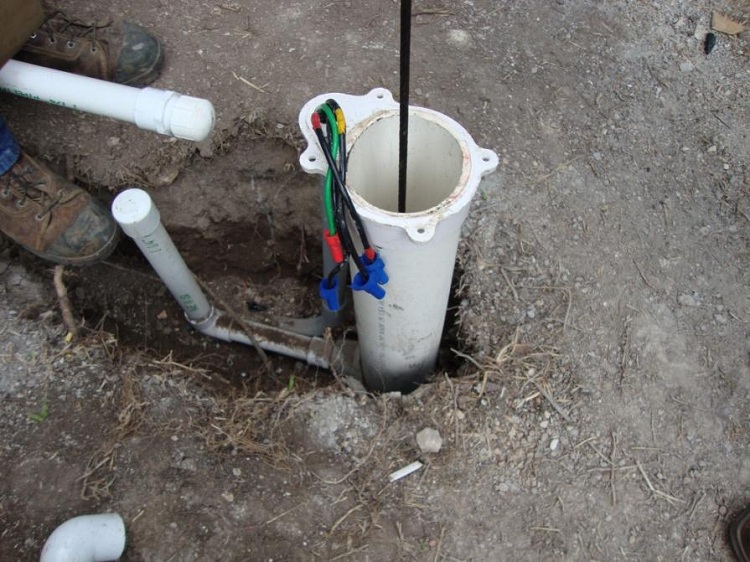
When drilling in loose soils, it is necessary to use casing pipes, otherwise the walls of the well will simply collapse
Advice! If the rocks are crumbling, do not lower the drill below the casing edge at a distance equal to half its length. So you will avoid a collapse.
Apparently, there is nothing complicated. Simply drilling must be alternated with the installation of casing pipes, which, as they are immersed, need to be increased. You can use both steel and plastic pipes for casing.
Well construction without caisson
A caisson is a chamber, usually of a circular shape, which does not allow substances to pass in a liquid-like state. Its main purpose is to prevent freezing of water and isolate the well from groundwater. Installation of such equipment is a very time-consuming and difficult process. And the need to install additional equipment in the caisson also leads to considerable financial costs. But this technically complex and expensive process has two alternatives. Briefly consider them.
- Pit. This method is most widely used. To create a pit, improvised materials are used and you can do without special equipment. However, compliance with certain rules will still be required.
The order of work is as follows: first, a hole is excavated with a depth of about 2 meters, and then concrete rings are installed in it. If the last operation is problematic, you can make the walls of the boards, and then pour concrete. But such a solution provides for additional waterproofing. As for the roof for the pit, it can also be made of boards or use a concrete hatch. To prevent freezing of water, it is better to insulate the walls.
You should know that creating a pit is allowed only in areas where the groundwater level on which can be characterized as low, that is, not exceeding 5 meters. And further. Concrete the bottom of the pit is not worth it. The reason is simple: this contributes to the fact that the water in the structure will be delayed. It is better to fill the bottom with sand or gravel.
- Adapter. The second method of arranging a well without a caisson is the use of a special adapter. It provides for the withdrawal of water pipes through the casing pipe of the well.
The adapter consists of two parts. One of them is attached to the pipe to which the pump is attached, and the second to the casing. When the pump is immersed in water, both parts of the adapter are tightly connected to each other. The tightness of the structure is ensured by the use of a rubber ring.
The ability to install the adapter yourself is a definite plus of this method. In the states of Europe it is already very popular. On the territory of our country, the use of this equipment is only beginning to gain momentum.
